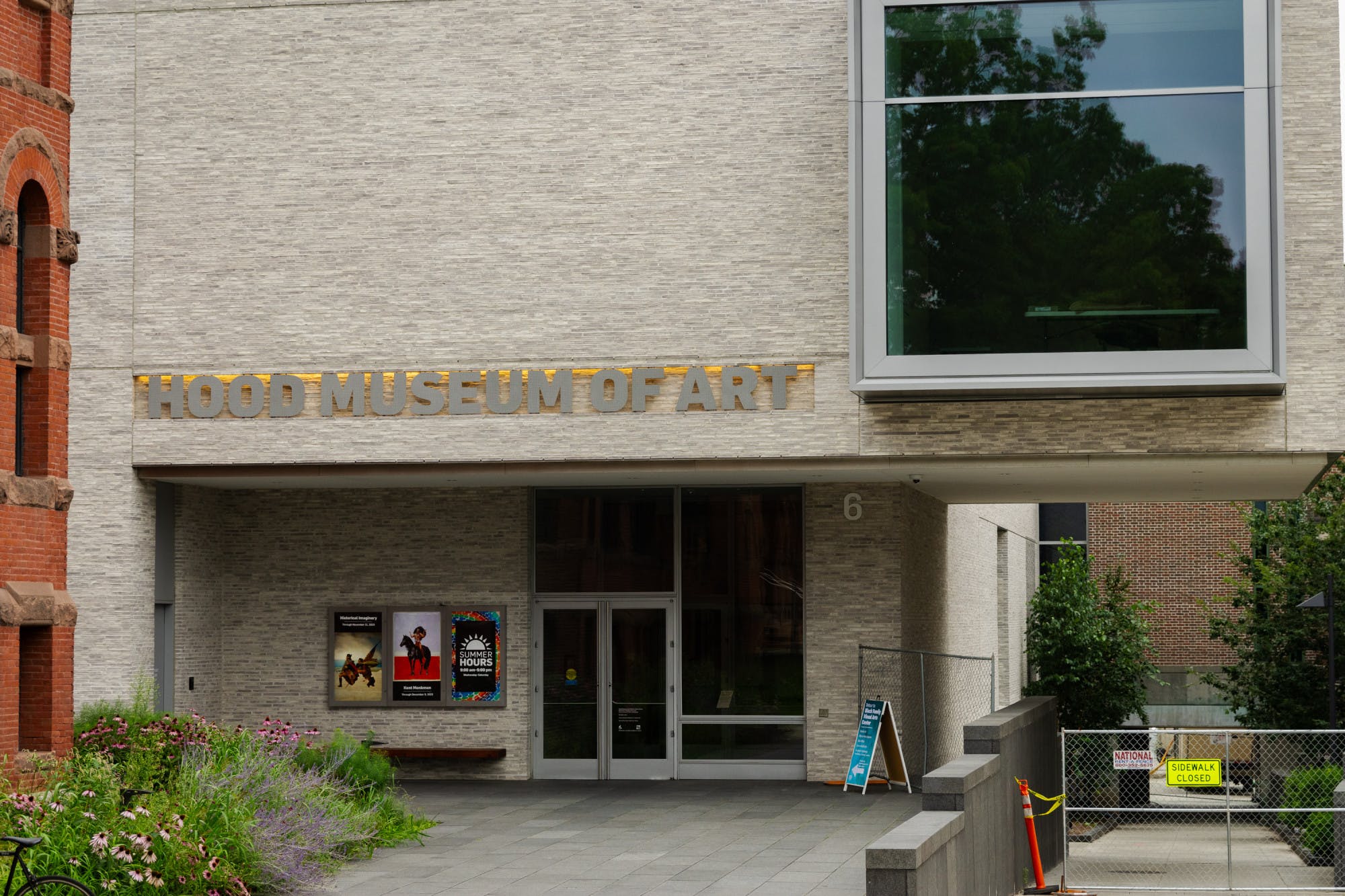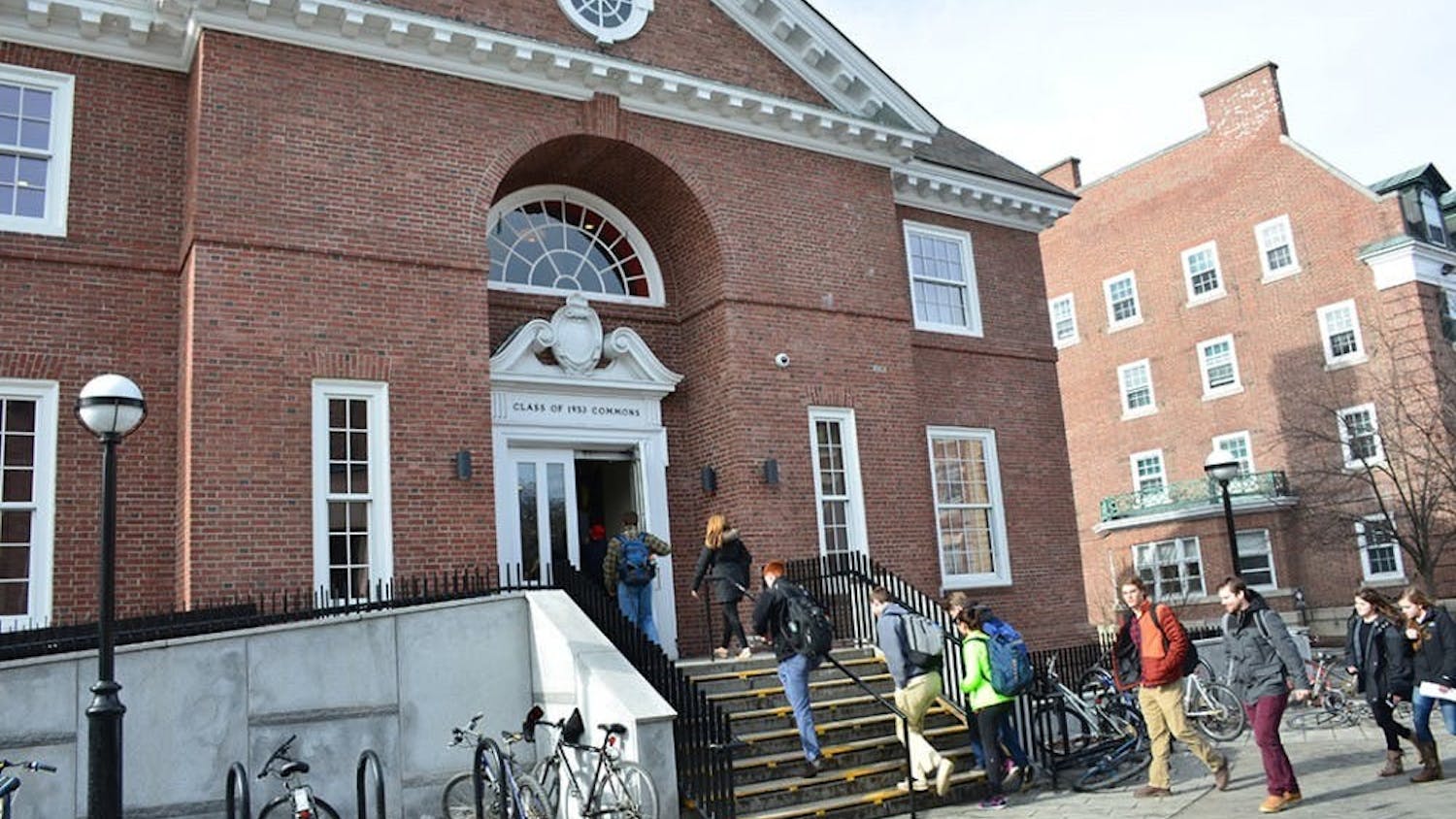This article is featured in the 2023 Freshman special issue.
In 2001, the Hood Museum of Art created the Space for Dialogue program with a mission to highlight diverse interpretations of the museum’s permanent collection. Each year, the program allows Dartmouth students to intern with the Hood Museum and curate an exhibition on a topic of their choice. Since the program's inception, 113 students have curated exhibitions covering a wide range of topics.
According to the Hood Museum’s website, interns engage with every aspect of curation, from researching and identifying relevant objects to selecting frames and even a wall color. Participants write captions for the curated pieces and design a brochure about the exhibit. Finally, the student presents a lecture discussing the significance and meaning of their curation.
This year, six students were selected to curate their own exhibitions. Three students, Nathan Savo ’24, Milanne Berg ’24 and Paulina Marinković Camacho ’23 finished hosting their exhibits earlier this year, while Leigh Smith ’23 displayed her exhibit this summer. Moonoka Begay ’23 and Caitlyn King ’24 are scheduled to host exhibits later this year.
Savo’s exhibition this winter,“Constructing the Ideal Soldier,” looked at art in the U.S. and Mexico to examine how depictions of service members challenge or affirm gender conventions and expectations of patriotism. Berg’s curation, “Taking up Space,” displayed contemporary American art that depicted various artist’s emotional and physical relationships with their bodies. In “Social Surrealism and the Exploration of Identity,” Marinković featured the works of artists Mika Rottenberg and Luis Gispert to explore class and gender-based aspects of Latinx experiences.
“[The artists build] fictitious worlds through photography to talk about their own Latin American identity and their background growing up in the United States,” Marinković said.
As an international student from Bolivia, Marinković said her curation was meaningful to that aspect of her identity.
King echoed this sentiment, as she experienced a similar connection between her curation and her identity. In October, King, who is of Laotian descent, will host an exhibition of Southeast Asian textiles.
“Southeast Asian textiles are an important tradition…[as they] are used for everyday wear but also hold lots of cultural significance,” King said.
Amelia Kahl ’01 was part of the first group of SFD interns and is now the curator for academic programming at the Hood. Kahl shared that participating in the program was a defining experience for her.
“[The program] definitely led me to the career I have today,” Kahl said. “Both my art history degree at Dartmouth and my experience at the Hood informed my decision to then go on to graduate school in art history.”
Kahl said it has been gratifying to return to the Hood as a professional and help facilitate the SFD program. Today, Kahl directs the program and said she hopes to provide current students with the same transformative experience she had.
Berg wrote that participating in the SFD program has been one of her favorite experiences at Dartmouth and has opened her eyes to a potential career working with museums.
“The Hood staff were always welcoming, encouraging, friendly and wanted to see us all succeed,” Berg wrote in an email statement to The Dartmouth. “Every week, we also had meetings with different staff members, to introduce themselves and their jobs to us, and expand our vision of the museum world.”
According to this year’s cohort of interns, creative freedom is a core tenet of the program. Marinković explained that while compiling her exhibition, she was able to access all of the Hood’s permanent collection.
“I got to search the entire Hood Museum’s collection and go to the off campus storage room to look at the pieces and see what worked for my exhibition,” Marinković said.
Smith also said she had complete creative freedom. This summer, Smith’s exhibit “On View: Windows in Art” examines views of private worlds, outlooks on the public world and abstractions of windows themselves.
“[Viewers] not only consider what lies beyond the window, but also how its framing influences our perception,” Smith said.
As a result of the SFD program, the Hood can acquire works not found in its permanent collection. Begay, whose exhibition opens on Aug. 19, led to the museum acquiring numerous works of queer, Indigenous art. King’s curation also contributed to the permanent collection by acquiring a textile made with beetle wings from Thailand. King said that after connecting with the curator of collections, Ashley Offil, they discussed acquiring art for King’s exhibition and ultimately for the collection.
King said she read about Dr. Wuthigrai Siriphon’s art in an article about sustainability and textile work. Next, King emailed Siriphon and set up a Zoom meeting. Later, King made a presentation for the Hood’s curatorial committee on the acquisition’s educational value to future students. And finally, the textile was shipped from Thailand to the U.S.
Both Begay and King’s acquisitions will become part of Hood’s permanent collection, diversifying the collection and allowing future students to explore the pieces’ significance.
Smith said that the SFD program gives students an idea of what a career in the art world might look like. For instance, Kahl said that participating in SFD served as a stepping stone towards her current career at the Hood.
“[The program is a] perfect way to introduce students interested in the museum field to all of the different areas of museum work that exist,” Smith said.
Savo said that the experience solidified his desire to pursue a curatorial career.
Kahl said that she encourages all students to apply to the program, as the Hood values the perspectives of students coming out of different majors and academic backgrounds. Kahl also encouraged all Dartmouth students to take the time to go and see their classmates' work.
“The program is an unparalleled example of hands-on learning,” Kahl said.



